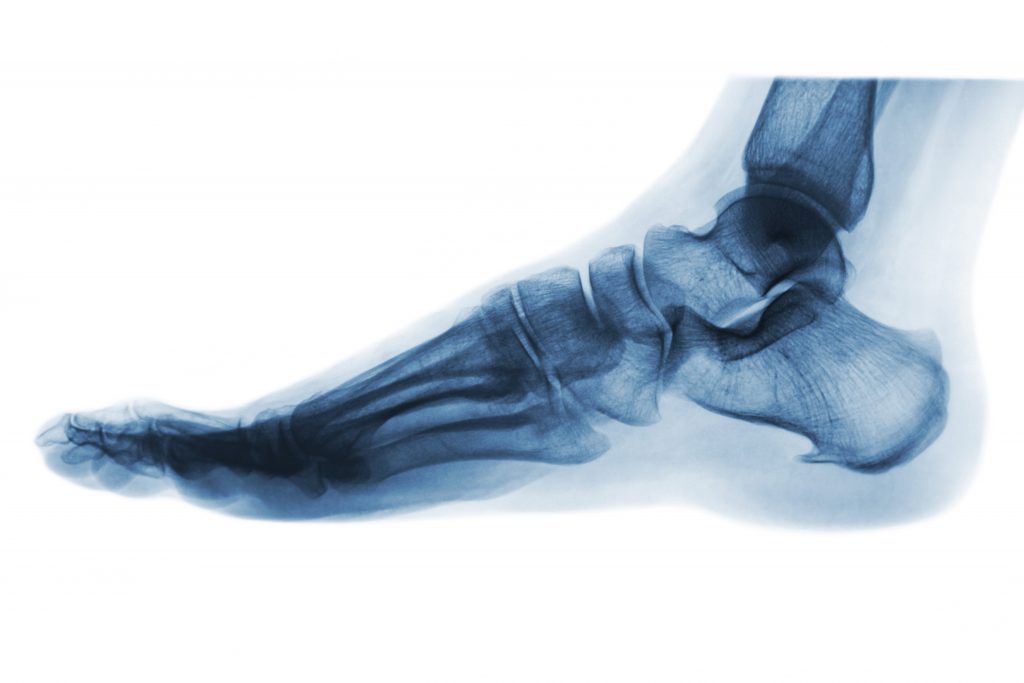What is Achilles bursitis?
The Achilles tendon is the large tendon that attaches the calf muscles to the heel bone. Do not confuse the Achilles tendon with the Peroneal Tendon. Retrocalcaneal bursitis, commonly known as Achilles bursitis, is a very common condition in athletes. A bursa is a small sack of fluid that sits between the calcaneus, or heel bone, and the Achilles tendon to help the tendon move smoothly over the bone. Laying between the heel bone and Achilles tendon, the retrocalcaneal bursa can become inflamed with repeated trauma. Achilles bursitis can often be mistaken for Achilles tendinitis and when a patient exhibits Achilles tendinitis and Achilles bursitis together, it is known as Haglund’s syndrome.

What causes Achilles Bursitis?
The most common cause of Achilles bursitis is overuse, typically from too much running, walking, or jumping, but can also occur traumatically. The risk for developing Achilles bursitis is heightened from a sudden increase in activity levels without prior substantial
training. Achilles Bursitis is also a secondary injury associated with conditions such as:
- Achilles Tendonitis
- Plantar Fasciitis
- Heel Spurs
- Fibromyalgia
- Rheumatoid Arthritis
What are the symptoms of Achilles Bursitis?
The most commonly reported symptom of Achilles bursitis is pain at the back of the heel that is increased when running uphill or running on soft surfaces. Some patients complain about pain worsening while standing on tiptoes. The back of the heel may be sensitive and tender to the touch and swelling may be observed.
How is Achilles Bursitis Diagnosed and Treated?
A physician will diagnose Achilles Bursitis following an examination and sometimes an x-ray. X-rays do not diagnose tendon bursitis, but they do rule out other pain causing ailments such as a fracture or form of arthritis. Always see an orthopedic physician for any foot and ankle pain you may have. Physicians will typically recommend conservative treatment such as rest, ice, and anti-inflammatory medication. A steroid injection can also be administered by your physician to reduce inflammation in the retrocalcaneal bursa. Your orthopedic physician may also place the foot in a cast and in rare instances, surgery may be required to remove the affected bursa.
F.A.Q.
What is Achilles bursitis, and how can it be treated?
Achilles bursitis refers to inflammation of the bursa. This small, fluid-filled sac is located between the Achilles tendon (the heel bone) and the Achilles tendon.
What causes Achilles bursitis in Achilles?
Achilles bursitis may be caused by injury to the heel or overuse of Achilles tendon.
What is the treatment for Achilles bursitis?
Achilles bursitis treatment may include rest, ice and compression. Sometimes, the doctor will prescribe medication to drain the bursa in order to reduce inflammation.
How long does Achilles bursitis take to heal?
The severity and treatment of bursitis will affect the recovery time. Most patients are able to return to their normal activities within a few weeks or months following treatment.
Is it possible to prevent Achilles bursitis?
To prevent Achilles bursitis, it is important to maintain proper foot and ankle biomechanics while exercising. Also, you should wear appropriate shoes and increase the intensity of your exercise to avoid injury.

